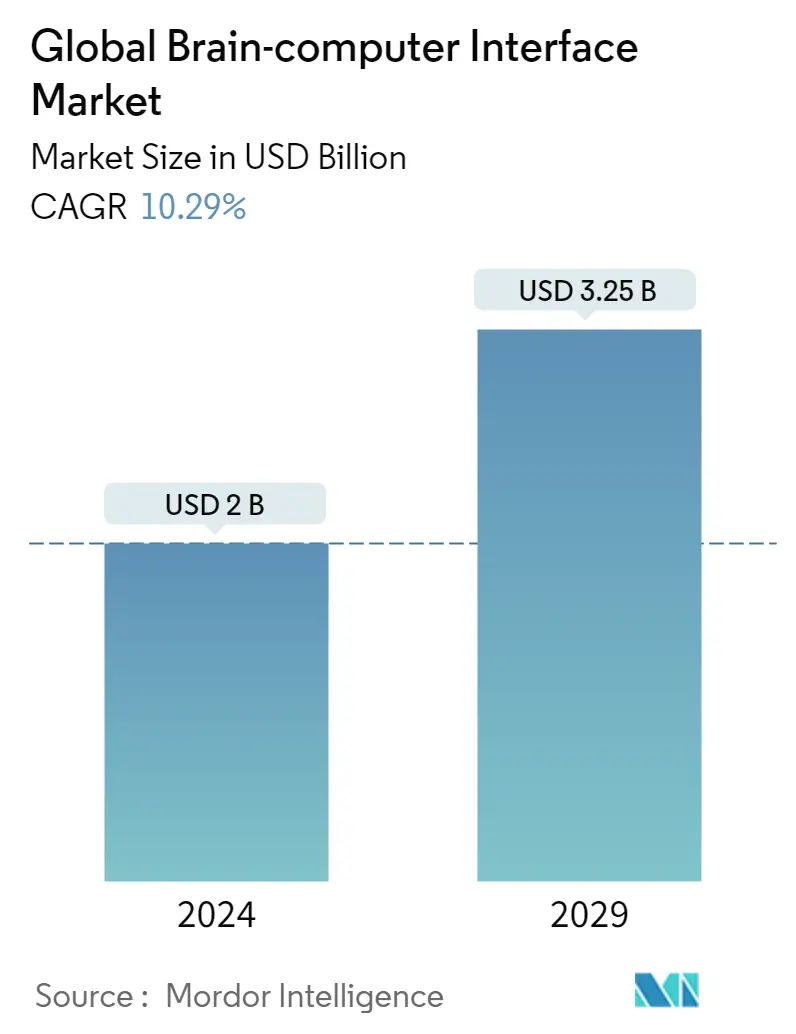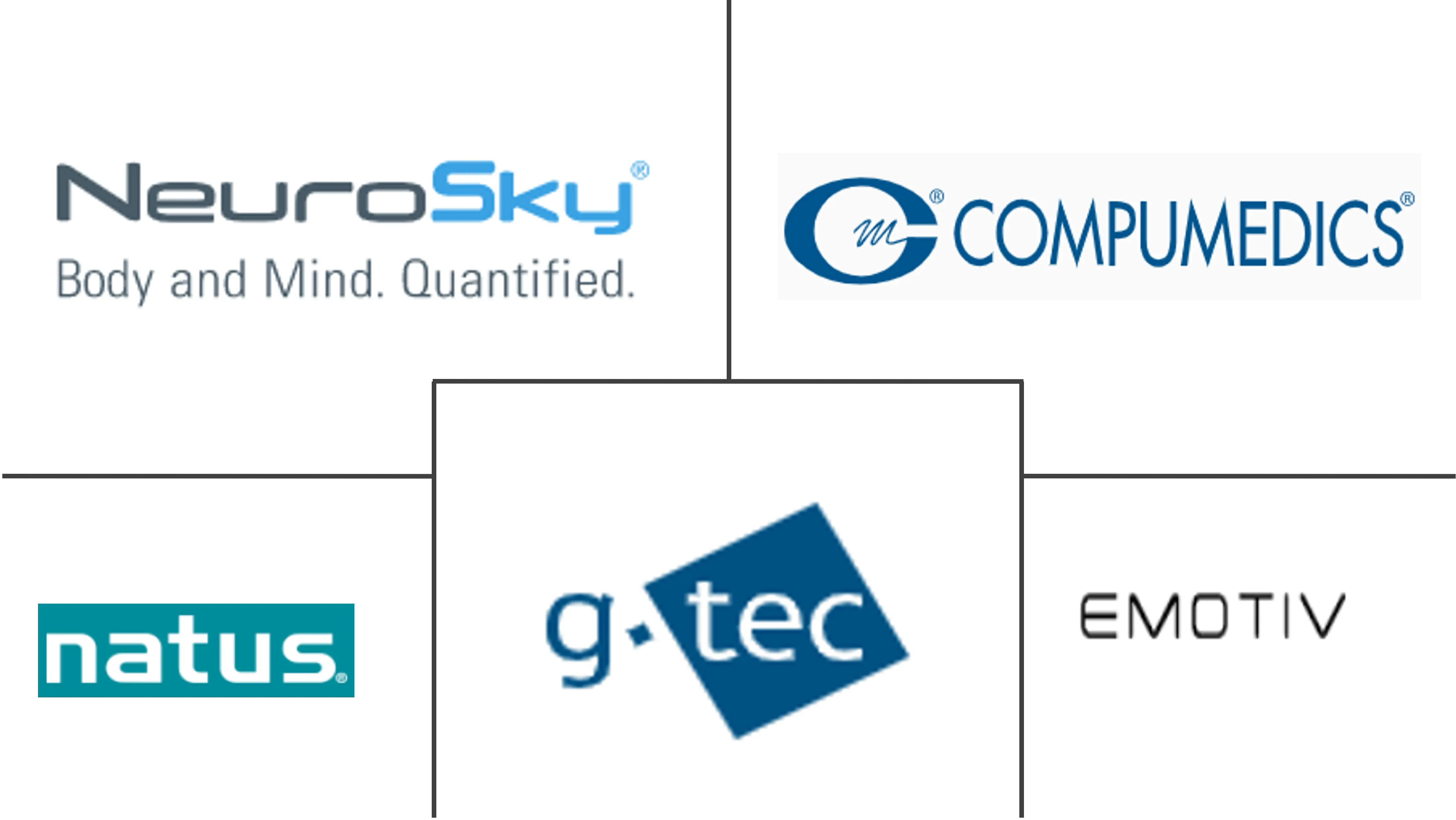Market Size of Global Brain-computer Interface Industry

| Study Period | 2019 - 2029 |
| Market Size (2024) | USD 2.00 Billion |
| Market Size (2029) | USD 3.25 Billion |
| CAGR (2024 - 2029) | 10.29 % |
| Fastest Growing Market | Asia Pacific |
| Largest Market | North America |
Major Players
*Disclaimer: Major Players sorted in no particular order |
Need a report that reflects how COVID-19 has impacted this market and its growth?
Brain-Computer Interface Market Analysis
The Global Brain-computer Interface Market size is estimated at USD 2 billion in 2024, and is expected to reach USD 3.25 billion by 2029, growing at a CAGR of 10.29% during the forecast period (2024-2029).
The initial impact of COVID-19 on the market was significant owing to lockdowns and disruptions in manufacturing and supply chain activities. However, the COVID-19 pandemic has hastened the deployment of new technologies while also increasing end users' reliance on them. The rising usage of brain-computer interface (BCI) technology for the treatment of many elderly patients suffering from physical impairments to translate specific signal features that reflect the elderly's intent into commands and enable them to improve their motor and cognitive abilities, which can be used as a promising tool in rehabilitation medicine during COVID-19, is likely to have a positive impact on the market growth. According to the report "Motor-Imagery EEG-Based BCIs in Wheelchair Movement and Control: A Systematic Literature Review" published in September 2021, the COVID-19 has created an opportunity for the development and implementation of innovative devices like BCIs, biomedical solutions, and assistive technologies (AT) to facilitate people with severe disabilities regarding their participation in daily life.
Further, the brain-computer interface market is likely to show rapid growth due to the increasing prevalence of neurodegenerative disorders, rising R&D activities by the companies to improve the brain-computer interface technology and various technological advancements such as miniaturization of devices.
Among all the factors, the increasing prevalence of neurodegenerative disorders is the foremost factor expected to drive the brain-computer interface market over the forecast period. According to the Parkinson's Foundation, more than 930,000 people in the United States were likely to be suffering from Parkinson's disease in 2020. Moreover, the report by the foundation also predicted that the number of people with Parkinson's disease is expected to rise to 1.2 million by 2030. This represents a projected increase of about 1.8 times in Parkinson's prevalence since 2010, highlighting the need for optimized care and treatment strategies for this patient population to diminish the burden of care on caregivers and ease the economic burden on the healthcare system. Therefore, most of these patients eventually require continuous care and monitoring or help, which can be facilitated by the use of brain-computer interface devices.
Moreover, the increase in R&D activities by various companies and investments from the governments in brain-computer interface technology development and new applications is a chief factor that may promote the growth of the market during the forecast period. For instance, according to an article titled "Funding for Brain-Computer Interface Ventures" published in August 2020, the Australian Federal Government awarded a USD 42 million grant to a research consortium called Bionic Vision Australia to develop bionic vision technology, a type of brain-computer interface technology. The technology was later transferred to Bionic Vision Technologies, which raised USD 18 million from private funders, presumably for further clinical trials and further development. Such investments by governments supporting technological innovation are increasing across the world, which will drive the market's growth globally.
However, the high cost of brain-computer interface devices and a lack of expertise in implementing the systems are the major factors hindering the market's growth.
